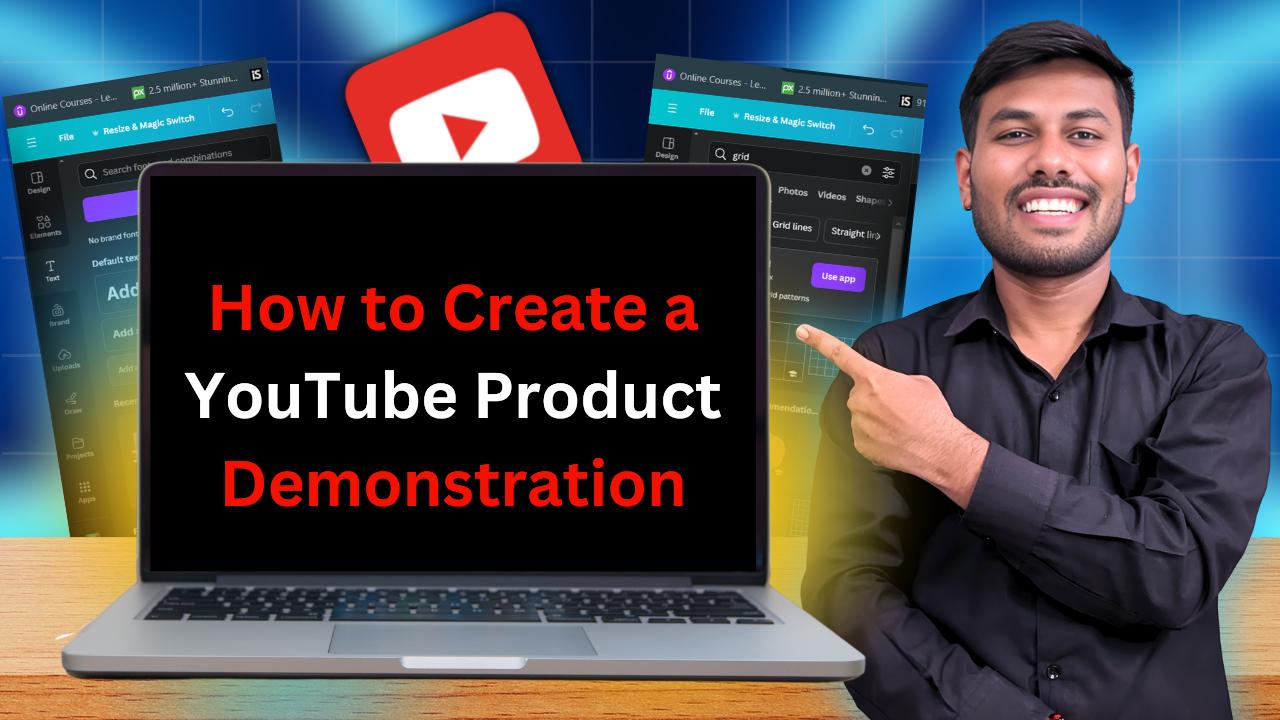How to Create a YouTube Product Demonstration
Creating a YouTube product demonstration video is an excellent way to showcase a product’s features, benefits, and usability. Demonstration videos help potential customers understand how a product works, which can drive engagement and sales. Here’s a comprehensive guide on how to create an effective YouTube product demonstration:
1. Understanding the Product
- Research Thoroughly: Understand the product’s features, specifications, and benefits inside out. This knowledge will allow you to highlight the most important aspects and answer potential questions from your audience.
- Identify Key Features: Choose the features that are most beneficial and relevant to your audience. Focus on aspects that differentiate the product from competitors.
2. Planning Your Video
- Define Your Audience: Understand who your target audience is and what they value in a product. This will help you tailor your demonstration to meet their needs and expectations.
- Outline the Script: Write a detailed script outlining what you will say and do during the video. This ensures you cover all necessary points and maintain a logical flow.
- Plan the Structure:
- Introduction: Briefly introduce yourself and the product. State what viewers can expect to learn from the video.
- Feature Demonstration: Walk through each feature of the product, explaining how it works and its benefits.
- Use Cases: Provide real-life examples of how the product can be used effectively.
- Conclusion: Summarize the key points and encourage viewers to take action, such as visiting a website or subscribing to your channel.
3. Setting Up Your Equipment
- Camera and Lighting: Use a good quality camera to capture clear visuals. Ensure the lighting is sufficient to highlight the product’s details without shadows or glare.
- Audio Quality: Use a quality microphone to ensure your voice is clear and professional. Good audio quality is crucial for keeping viewers engaged.
- Background and Environment: Choose a clean and distraction-free background. The focus should be on the product.
4. Recording the Video
- Maintain Clarity: Speak clearly and at a moderate pace. Avoid technical jargon that may confuse viewers.
- Engage with the Audience: Maintain eye contact with the camera, and use gestures to emphasize points. This creates a connection with your viewers.
- Show, Don’t Just Tell: Visually demonstrate each feature and function. Show the product in action, highlighting its practical use and benefits.
5. Editing Your Video
- Choose the Right Software: Use editing software like Adobe Premiere Pro, Final Cut Pro, or DaVinci Resolve to enhance your video.
- Add Graphics and Text: Include graphics, text overlays, and annotations to highlight important features or points.
- Incorporate Background Music: Use subtle background music to set the tone and maintain viewer interest. Ensure the music doesn’t overpower the narration.
- Use Transitions: Smooth transitions between scenes help maintain a professional look and keep the viewer engaged.
6. Promoting Your Video
- Optimize for SEO: Use relevant keywords in your video title, description, and tags to improve searchability.
- Create an Eye-Catching Thumbnail: Design a compelling thumbnail that accurately represents the video content and attracts clicks.
- Leverage Social Media: Share your video across social media platforms to reach a broader audience. Encourage your followers to share the video.
- Engage with Comments: Respond to viewer comments and questions to build community and trust.
Conclusion
Creating a YouTube product demonstration video requires careful planning, thorough research, and effective presentation skills. By following these steps, you can create a compelling and informative video that showcases your product and engages your audience. Remember, the key to a successful demonstration video is to focus on the product’s benefits and provide clear, actionable insights for your viewers.
How to Create a YouTube Product Comparison Video
1. Selecting Products for Comparison
- Choose Relevant Products: Select products that are similar in type, price range, or purpose to ensure a fair comparison. Your audience should be able to see clear differences and similarities.
- Research Thoroughly: Gather detailed information about each product, including specifications, features, benefits, and pricing. This will help you provide a well-rounded comparison.
- Consider Audience Interests: Select products that your target audience is interested in or is likely to purchase. This ensures that your content is relevant and engaging.
2. Planning Your Video
- Outline the Script: Create a structured script that outlines what you will cover in the video. This includes product introductions, feature comparisons, pros and cons, and your final recommendations.
- Plan the Structure:
- Introduction: Introduce the products and the purpose of the comparison video.
- Feature Comparison: Discuss and compare the key features of each product.
- Pros and Cons: Highlight the strengths and weaknesses of each product.
- Conclusion: Summarize your findings and offer a recommendation based on the comparison.
3. Setting Up Your Equipment
- Camera and Lighting: Use a good quality camera to capture clear visuals. Ensure the lighting is sufficient to highlight product details without shadows or glare.
- Audio Quality: Use a quality microphone to ensure your voice is clear and professional. Good audio quality is crucial for maintaining viewer engagement.
- Background and Environment: Choose a clean and distraction-free background. The focus should be on the products being compared.
4. Recording the Video
- Be Objective: Present the information objectively, highlighting both the positives and negatives of each product. Avoid showing bias towards one product over another.
- Engage with the Audience: Maintain eye contact with the camera, and use gestures to emphasize points. This creates a connection with your viewers.
- Demonstrate Features: Visually demonstrate the features of each product, showing them in action. This helps viewers understand how the products compare in real-world usage.
5. Editing Your Video
- Choose the Right Software: Use editing software like Adobe Premiere Pro, Final Cut Pro, or DaVinci Resolve to enhance your video.
- Add Graphics and Text: Include graphics, text overlays, and annotations to highlight key features and comparisons.
- Incorporate Background Music: Use subtle background music to set the tone and maintain viewer interest. Ensure the music doesn’t overpower the narration.
- Use Transitions: Smooth transitions between scenes help maintain a professional look and keep the viewer engaged.
6. Promoting Your Video
- Optimize for SEO: Use relevant keywords in your video title, description, and tags to improve searchability.
- Create an Eye-Catching Thumbnail: Design a compelling thumbnail that accurately represents the video content and attracts clicks.
- Leverage Social Media: Share your video across social media platforms to reach a broader audience. Encourage your followers to share the video.
- Engage with Comments: Respond to viewer comments and questions to build community and trust.
Additional Tips for Successful Product Comparison Videos
- Use a Consistent Format: Develop a consistent format for your comparison videos to help viewers know what to expect and build trust.
- Highlight Unique Selling Points: Focus on the unique selling points of each product to help viewers understand what makes each option stand out.
- Include a Call to Action: Encourage viewers to like, comment, and subscribe at the end of your video, and provide links for more information or to purchase the products.
Conclusion
Creating a YouTube product comparison video requires careful planning, objective presentation, and effective editing. By following these steps, you can create an informative and engaging video that helps your audience make informed purchasing decisions. Remember, the key to a successful comparison video is to provide clear, unbiased information that addresses your viewers’ needs and preferences.
learn more about youtube – here
also learn – How to Create a YouTube Podcast

